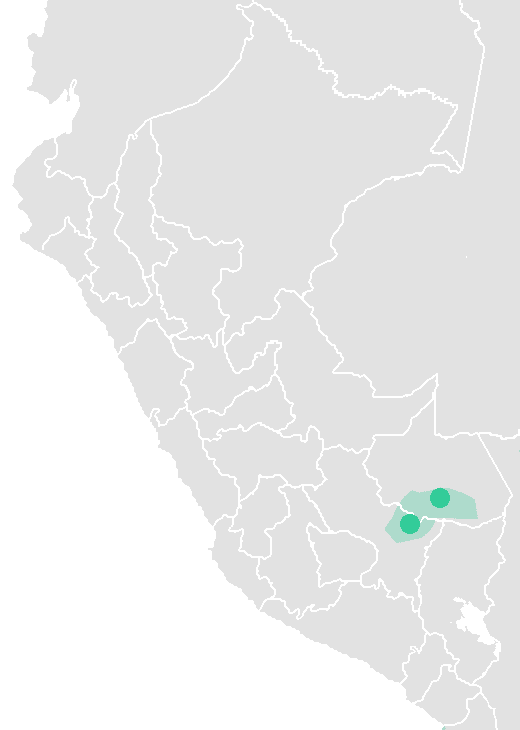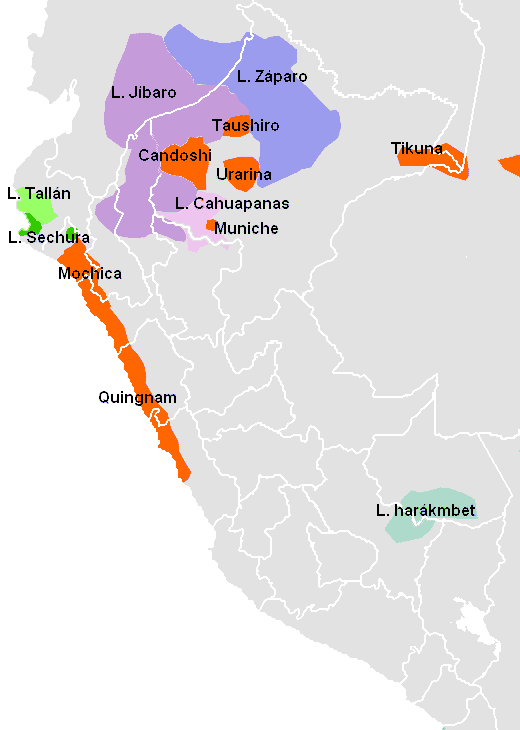|
Arazaire Language
Arazaire and Arasa are a pair of closely related languages of uncertain affiliation. These have been claimed to be either Panoan or Takanan, or Takanan with Panoan words. Campbell (2012) says they are too poorly attested to classify. However, Fleck (2013) classifies them definitely in the Madre de Dios branch of Panoan, and says that the confusion is due to a second, Takanan language that also went by the names ''Arazaire'' and ''Arasa''; a similar naming problem has caused confusion with its close relative Yamiaka. The name ''Arasairi'' has been used for a yet another language, a dialect of the language isolate Harakmbut. References Languages of Peru Panoan languages Tacanan languages {{Bolivia-stub ... [...More Info...] [...Related Items...] OR: [Wikipedia] [Google] [Baidu] |
Peru
, image_flag = Flag of Peru.svg , image_coat = Escudo nacional del Perú.svg , other_symbol = Great Seal of the State , other_symbol_type = National seal , national_motto = "Firm and Happy for the Union" , national_anthem = "National Anthem of Peru" , march = "March of Flags" , image_map = PER orthographic.svg , map_caption = , image_map2 = , capital = Lima , coordinates = , largest_city = capital , official_languages = Spanish , languages_type = Co-official languages , languages = , ethnic_groups = , ethnic_groups_year = 2017 , demonym = Peruvian , government_type = Unitary semi-presidential republic , leader_title1 = President , leader_name1 = Dina Boluarte , leader_title2 = First Vice President , lead ... [...More Info...] [...Related Items...] OR: [Wikipedia] [Google] [Baidu] |
Panoan Languages
Panoan (also Pánoan, Panoano, Panoana, Páno) is a family of languages spoken in Peru, western Brazil, and Bolivia. It is possibly a branch of a larger Pano–Tacanan family. Genetic relations The Panoan family is generally believed to be related to the Tacanan family, forming with it Pano–Tacanan, though this has not yet been established (Loos 1999). Language contact Jolkesky (2016) notes that there are lexical similarities with the Kechua, Mapudungun, Moseten-Tsimane, Tukano, Uru-Chipaya, Harakmbet, Arawak, Kandoshi, and Pukina language families due to contact. Languages There are some 18 extant and 14 extinct Panoan languages.Fleck, David. 2013. Panoan Languages and Linguistics'. Anthropological Papers of the American Museum of Natural History 99. In the list of Panoan languages below adapted from Fleck (2013), (†) means extinct, and (*) obsolescent (no longer spoken daily). Dialects are listed in parentheses. *Mayoruna ** Tabatinga Mayoruna ost divergent† ... [...More Info...] [...Related Items...] OR: [Wikipedia] [Google] [Baidu] |
Tacanan Language
Tacanan is a family of languages spoken in Bolivia, with Ese’ejja also spoken in Peru. It may be related to the Panoan languages. Many of the languages are endangered. Family division * Ese Ejja (a.k.a. Ese’eha, Tiatinagua, Chama, Huarayo, Guacanawa, Chuncho, Eseʼexa, Tatinawa, Ese exa) *Araona–Tacana ** Araona (a.k.a. Carina, Cavina) **Cavineña–Tacana *** Cavineña (a.k.a. Kavinenya) ***Tacana **** Tacana (a.k.a. Tupamasa, Takana) **** Reyesano (a.k.a. San Borjano, Maropa) **** Toromono † Toromono is apparently extinct. Another possibly extinct Tacanan language is Mabenaro; Arasa has been classified as Tacanan, but appears to have more in common with Panoan. Language contact Jolkesky (2016) notes that there are lexical similarities with the Kayuvava, Tupi, and Arawak language families due to contact. Varieties Below is a full list of Tacanan language varieties listed by Loukotka (1968), including names of unattested varieties. *Tacana - language with ma ... [...More Info...] [...Related Items...] OR: [Wikipedia] [Google] [Baidu] |
Yamiaka Language
Atswawaka, also called Atsahuaca, or Atsawaka-Yamiaka, is an extinct Panoan language of Peru. ''Atsahuaca'' is the name that the tribe calls themselves, meaning "children of the manioc ''Manihot esculenta'', commonly called cassava (), manioc, or yuca (among numerous regional names), is a woody shrub of the spurge family, Euphorbiaceae, native to South America. Although a perennial plant, cassava is extensively cultivated ..." in their own language. Alternate spellings of the name of the Atswakaka language include: Atsawaka, Atsawaca, Astahuaca, Yamiaca, Yamiaka, Atsawaka-Yamiaka, and Atsahuaca-Yamiaca. There were 20 speakers in 1904. Alphabet The Atswawaka alphabet uses 24 letters commonly, and has 8 characters used for vowels. Vocabulary :Man - ''t'harki'' :Woman - ''tcinani'' :Yes - ''ei'' :No - ''tcama'' :Tea - ''ita'' :Tree - ''isthehowa'' References Panoan languages Indigenous languages of Western Amazonia Languages of Peru Extinct languages ... [...More Info...] [...Related Items...] OR: [Wikipedia] [Google] [Baidu] |
Harakmbut Language
The Harakmbut (Arakmbut, Harakmbet) are indigenous people in Peru. They speak the Harakmbut language. An estimated 2,000 Harakmbut people live in the Madre de Dios Region near the Brazilian border in the Peruvian Amazon."Peru: Indigenous Harakmbut Suffer Effects Of Climate Change." ''Indigenous Peoples Issues and Resources.'' (retrieved 20 Feb 2011) Amarakaeri  Amarakaeri are also called Amaracaire or Amarakaire people. Su ...
Amarakaeri are also called Amaracaire or Amarakaire people. Su ...
[...More Info...] [...Related Items...] OR: [Wikipedia] [Google] [Baidu] |
Languages Of Peru
Peru has many languages in use. One of its official languages, Spanish, has been in the country since it began being taught in the time of José Pardo instead of the country's Native languages, especially the languages in the Andes. In the beginning of the 21st century, it was estimated that in this multilingual country, about 50 very different and popular languages are spoken: which reduces to 44 languages if dialects are considered variants of the same language. The majority of these languages are Indigenous, but the most common language is Spanish, the main language that about 94.4% of the population speaks. Spanish is followed by the country's Indigenous languages, especially all types of Quechua (11.1% combined) and Aymara (1.4%), who also have co-official status according to Article 48 of the Constitution of Peru, as well as the languages of the Amazon and the Peruvian Sign Language. In urban areas of the country, especially the coastal region, most people are monoli ... [...More Info...] [...Related Items...] OR: [Wikipedia] [Google] [Baidu] |
